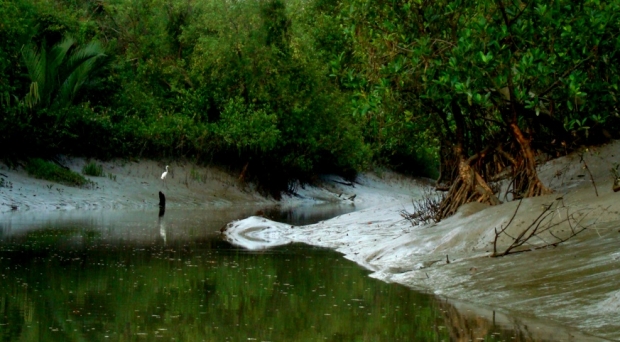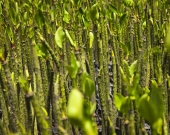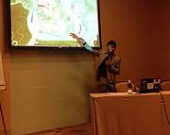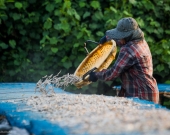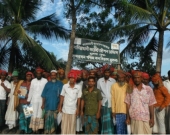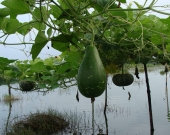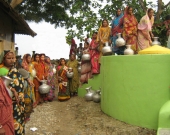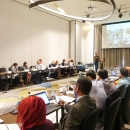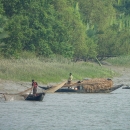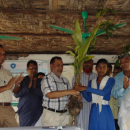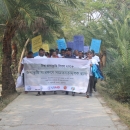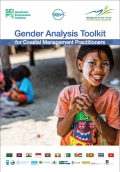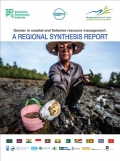Bangladesh; with an ecosystem based approach for coastal community resilience
MFF Bangladesh is focusing on ecosystem based adaptation to climate change and building coastal relilience. This includes: understanding the full economic value of mangroves for building coastal resilience, promoting benefit sharing mechanism to ensure rights of the coastal communities over coastal ecosystems, exploring ecosystem based solutions for coastal protection, and assisting the coastal communities to become more resilient.
Country strategy for Bangldesh is focused on three principles; Preserving ecosystem integrity, Ensuring population safety and Promoting sustainable livelihoods. The NSAP has 32 strategies organized under five thematic areas. Each of the thematic areas addresses different sets of MFF PoWs. Each of the thematic areas also include strategies to address the five cross-cutting issues of MFF; climate change, gender, communications, capacity development and private sector engagement.
National Coordinating Body (NCB) for MFF Bangladesh has been formed by the Ministry of Environment and Forest in October 2011. Bangladesh NCB endorsed its National Strategy and Action Plan in 2012. Bangladesh is initiating its Small Grants Facility with the financial assistance of DANIDA from 2013.
Coastal Zone of Bangladesh
Bangladesh’s coast consists of 19 coastal districts officially. But even the furthest point of the country is within 400 kms of the coastline. The countries culture is closely linked with the rivers which through complex natural linkages finally reach the coast.
The official coastal zone includes both land and sea areas. Based on vulnerability to salinity intrusion, cyclones and tidal surge; the land area is further divided into interior and exterior coast. Bangladesh considers 200 nautical miles sea waters and continental shelf southwards of its coastline as its exclusive economic zone. Bangladesh shares the Bay of Bengal with India and Myanmar.
Among the 25 bio-ecological zones of the country, 11 are wholly situated in the coastal zone, 4 others have parts of them in the coast. The countries coastal ecosystems include mangroves, coral reefs, sea grass beds, sandy beaches, sand dunes, Inter-tidal and sub-tidal wetlands and mudflats, flood plain, salt Marshes, estuaries, lagoons, peninsula, offshore islands, tropical hill forest etc. Major part of the world’s largest mangrove “Sundarbans” is one of its key ecosystems. But these ecosystems are degrading alarmingly due to various external pressures especially due to pollution and exploitation. However, the country has developed a wide network of protected areas in the coast. There are 10 wildlife sanctuaries, 5 national parks, 17 fish sanctuaries, 4 ECAs, and 1 Ramsar site in the coastal zone.
The coastal zone contributes highly to the national development. There are 2 sea ports and 3 EPZs, 3 gas fields in the coast and several gas blocks in the EEZ. There is known stock of other minerals in the coast too. There is significant industrial development in the coast which is increasing. Fishery is the second largest contributing to the national GDP.
The major hazardous issues faced by the country includes cyclones and storm surge, land erosion, flood, drainage congestion, salinity intrusion, drought, earthquake, shortage of drinking water & arsenic contamination, ecosystem degradation, pollution and climate change. The country has been repeatedly struck by fierce cyclones leaving devastations for human beings as well as biodiversity. Changes in land use mainly due to the increased pressure of population on the limited resources are posing threat to the coastal ecosystems. National Adaptation Plan of Action (2005) has identified potential threat to the protected areas and biodiversity due to climate change. An assessment done after the 2004 Indian oceane Tsunami shows that the impacts will go beyond the coastal zone and may even reach Dhaka, the capital of the country.
Major livelihoods in the coastal zone are agriculture, fishery, salt farming, shrimp culture, industrial and agricultural labour, and extraction of forest resources etc. The urban areas in Khulna and Chittagong have diversity in livelihoods due to the growth of the service sector. GDP is high in these two areas thab the rest of the coastal zone. However, GDP of the coastal zone is lower than the national GDP. Poverty is very common in the coast, 29 % of the people are extreme poors. People’s dependence on natural resources for livelihoods is one of the major challenges to be addressed.
 Bangladesh
Bangladesh 